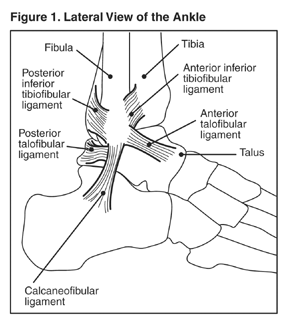|
For the next week, we will be focusing on and learning about different articulations (joints) in the human body. Furthermore, we will start the muscular system soon and having a working understanding of the different articulations, especially amphiarthrosis and diarthrosis joints, will help you understand gross muscle anatomy and movement much better. This post is about sprains, specifically an ankle sprain, and connects well with lecture and laboratory. Further at the bottom of this post, I've collected a few good resources on sprains if you are interested. SprainsEverybody can relate to twisting their ankle, limping around, and dealing with a sprain. Go ahead, think about the last time you twisted your ankle and start to picture the tibia, fibula, and calcaneous bone that we have already gone over. What happened? What causes you to limp? Why does the ankle become inflamed and why do most sprains take so long to heal? First, what is a sprain? A sprain occurs when ligaments are stretched to the point where some of the collagen fibers are torn, but ultimately the entire ligament remains intact. Let's look at the gross anatomy of the ankle joint. So lets look at some of possible ligaments involved in a sprain: The Posterior inferior tibiofibular ligament Remember to break down the roots of the words:
Quick Review
Resources on Sprains
0 Comments
We recently talked about how calcium homeostasis and the effect exercise has on the growth and maintenance of bones in the skeletal system. I wanted to share two articles reporting on current research related to both topics and use them to review some key concepts from class.
Effect of exercise on bone growth Think of the cells that will be activated to either build up bone (osteoblasts) or break down bone (osteoclasts). When bones are subjected to stress, repeatedly jolted, those bones are going to increase in size because your bone cells (osteoblasts) will respond by depositing more calcium and collagen in the extracellular matrix, building bone mass. The Well Blog from the New York Times reported on research conducted by scientists at the University of Bristol that examined the benefits of high impact exercise on your bones, you can read more about it here if you are interested. Are Vitamin D supplements worth it? Probably not, according to recent research. Calcium Homeostasis After covering the integumentary and skeletal system, you should have a good idea of why Vitamin D3 is important in regulating calcium levels in the body. The Well Blog at the New York Times has reported that recent research has demonstrated that Vitamin D supplements (like vitamins) have little to no benefit or impact on bone health, click to check it out. Brief review. What is vitamin D3?
|
AuthorMy name is Sean Kent and I teach Anatomy and Physiology at Massasoit Community College. This blog will provide different study tips, recent news articles, and scientific research that relate to the course. ArchivesCategories
All
|

 RSS Feed
RSS Feed
